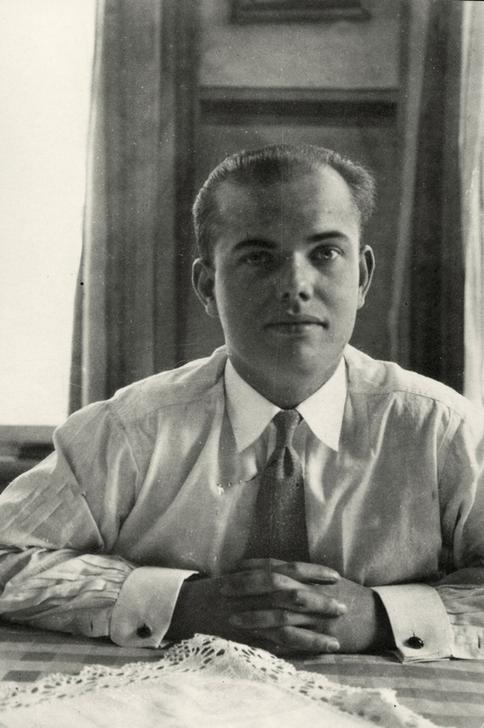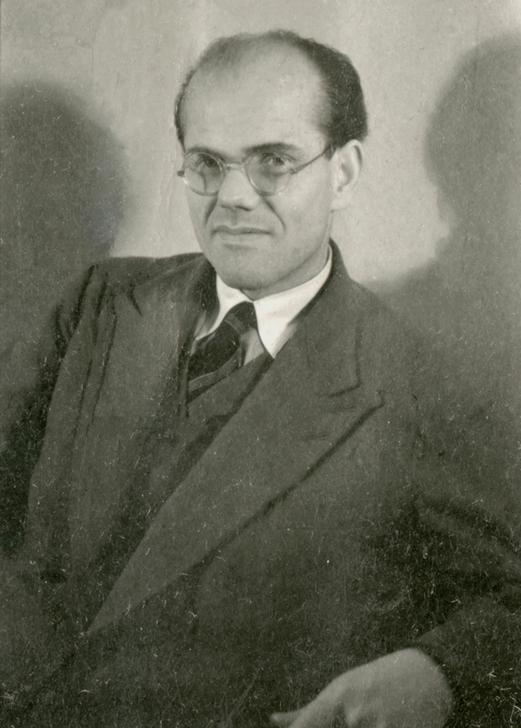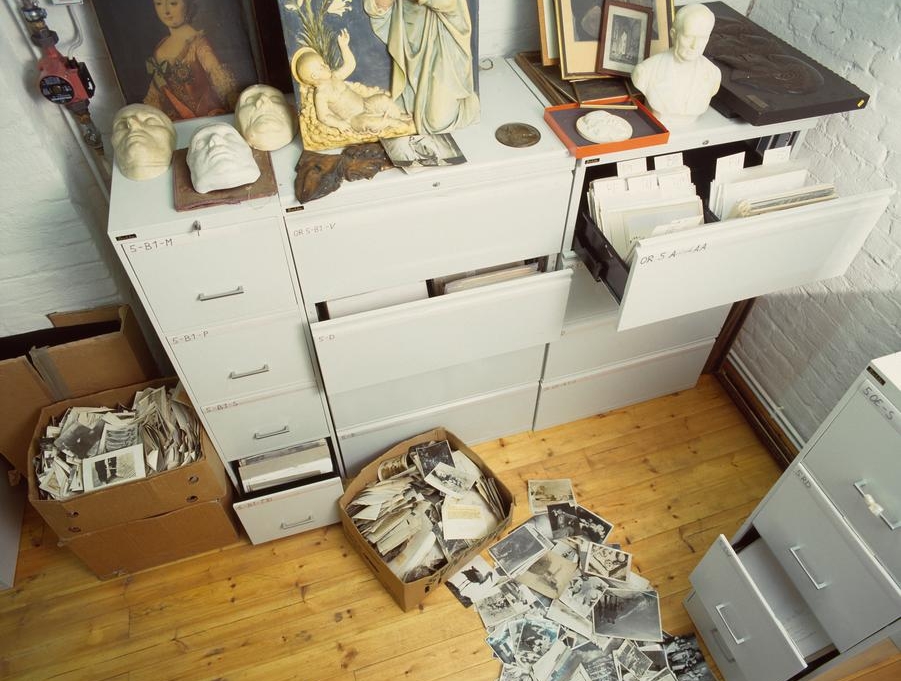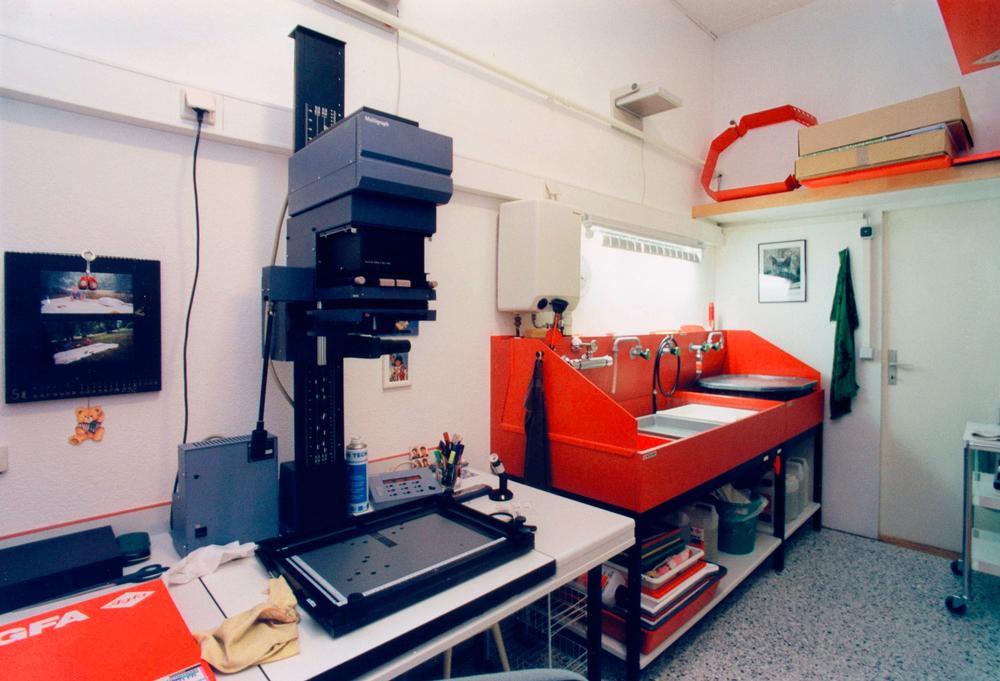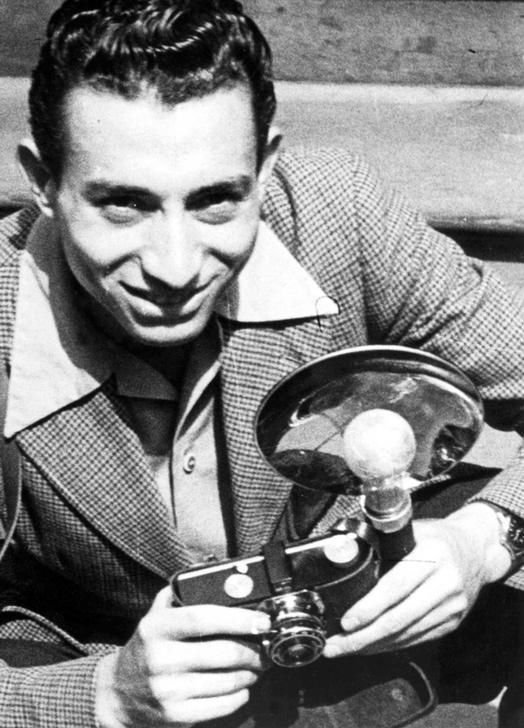Happy 75th Birthday, akg-images!
akg-images celebrates its 75th anniversary! To mark this milestone, we have delved behind the scenes at akg-images to explore the company’s vast history, from its origins in the 1940s as a journalist’s private collection to the international brand it is today!
AN IDEA IS BORN
You may have wondered what the acronym AKG stands for. The letters originate from the archive’s very first name, “Archiv für Kunst und Geschichte” (the German for ‘Archive for Art and History’), when it was founded in Leipzig, Germany, in November 1945. The archive’s founder, Wilfried Göpel (1908-1990), was an art collector and journalist who saw his home-town of Leipzig as the ideal location to set up a press photo archive, given that the city was one of Germany’s leading media centres at the time and had hosted the largest book fair in Germany before the outbreak of World War II. However, after the American occupying forces left the city and were replaced by Soviet forces, Wilfried Göpel moved his archive to the leafy Berlin suburb of Zehlendorf, where he had lived and worked before the war. As the archive expanded in size, it moved premises several times around Berlin until, in 1980, it relocated to the address at which it can still be found today: Teutonenstrasse 22.
Ⓒ akg-images
Ⓒ akg-images
Ⓒ akg-images
A PASSION FOR COLLECTING
The entrepreneurial spirit of founder Wilfried Göpel shone through from the very start, and his influence on the akg-images archive is still evident to this day. He strove to correspond with numerous artists and leading cultural figures of his day to negotiate reproduction permissions, enabling AKG to supply a wide range of images to the re-emerging publishing industry of post-war Germany. From the very beginning, AKG collaborated with large German publishers Brockhaus and Bertelsmann, who needed vast amounts of images to illustrate their encyclopaedias.
Early on, Wilfried Göpel developed a complex cataloguing system for his press photo archive, using extensive keywords to organise the photographs, documents and illustrations thematically. This same system still forms the foundation of akg-images’ cataloguing system today, having been expanded and refined over the decades.
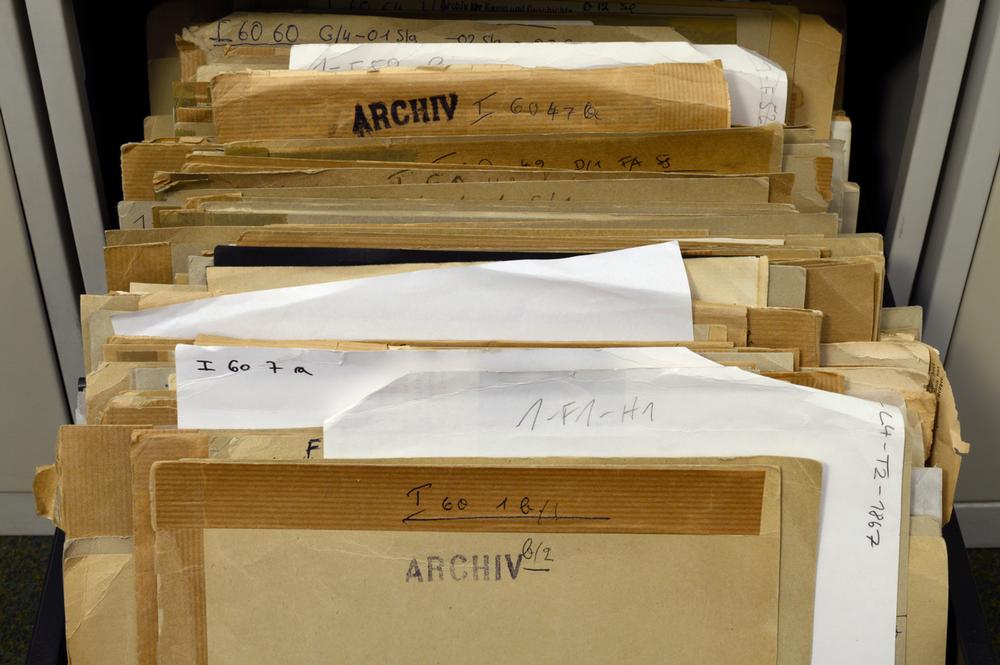
Photo, 2015.
Ⓒ akg-images
Wilfried Göpel was an avid collector who loved searching antiquarian bookshops and flea markets to acquire treasures to add to his growing collection. Aside from photographs, he began collecting graphic design prints, one of the earliest forms of visual mass media, and original oil paintings.
As an art collector, Wilfried Göpel was particularly interested in the work of German painter Theodor Hosemann. In 1983 he was able to loan a large number of artworks from his own collection to the Staatsbibliothek in Berlin for an exhibition about Hosemann’s work. On this occasion, Wilfried Göpel is said to have remarked that it was already in the early 1930s that he had first started considering the possibility of one day “collecting such things myself, in order to preserve them for future generations”.
BUILDING THE BRAND
For health reasons, Wilfried Göpel had to step back from the daily running of the archive in 1974, after which time he handed over the management of the company to his wife, the journalist Marielise Göpel (born 1922) and their son Justus Göpel (1948-1996). Marielise Göpel, an astute businesswoman herself, was especially interested in raising the archive’s profile in the fields of art history, musicology, historiography of religion and cultural history. Her strengths lay in marketing and communication, two skills with which she championed the AKG brand. It was thanks to Marielise Göpel’s initiative and foresight that AKG first exhibited at the Frankfurt Book Fair in the early 1970s, one of the first picture libraries to do so. Since then, this has become somewhat of a tradition for the company – akg-images has been exhibiting at the Frankfurt Book Fair every year since, meeting with clients from the world of publishing. It was also under Marielise Göpel’s guidance that the company first launched its own photo lab, equipped with a darkroom, in order to supply prints to clients at an even faster speed.

Ⓒ akg-images

Ⓒ akg-images

Ⓒ akg-images
In 1985, Justus Göpel became the sole CEO of the company. Justus Göpel was not only a passionate historian; he also shared his father’s enthusiasm for collecting images and his mother’s strong business acumen. As such, he was able to increase and diversify the image ranges and turn AKG into a historical archive recognised across Europe.
EXPANDING THE TEAM
In the 1980s, Justus Göpel began reorganising the vast amount of image material held in the archive. He introduced an electronic database, as well as a documentation department led by art historian Karl-Friedrich Hahn. This documentation department still exists to this day and is in charge of ensuring that image captions are meticulously researched, categorised and keyworded. Under Justus Göpel, the archive’s photo lab was also greatly enlarged, eventually employing a total of six photographers under the leadership of designer Dieter Hoppe. Both Karl-Friedrich Hahn and Dieter Hoppe are still part of the Berlin team today, working to maintain the highest standard of captioning and the best quality of scanning.
Ⓒ akg-images
Ⓒ akg-images
In 1988 Justus Göpel published a book entitled “Sommer in Berlin. Momentaufnahmen der Gebrüder Haeckel” (Summer in Berlin. Snapshots by the Haeckel Brothers), showcasing the photography of Otto and Georg Haeckel. This publication was an important contribution to the study of photography, then still in its infancy, and allowed the works of these major press photographers of the 20th century to be discovered and recognised for its artistic value.
THE POWER OF PRINT
In 1993, AKG produced its first printed catalogue; a milestone which enabled clients to appreciate the breadth of the archive, showcasing images from the fields of art, history, science, economics, daily life, geography, music, literature, religion, media and architecture. The following year, in 1994, AKG published its very first desk diary featuring 53 beautiful black and white photographs from the archive; a much-loved tradition that continues to this day!
To view the stunning image selections from previous diaries, please click here.
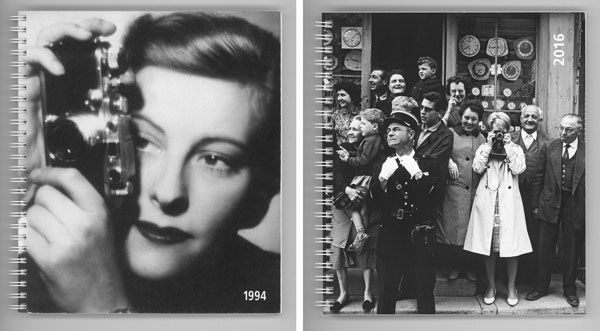
Also in 1994, AKG launched a weekly serviced called “AKG-Pressebild” (German for ‘AKG Press Photo’), which would send out weekly image selections to press clients in the form of photographic prints. These selections would cover upcoming anniversaries and newsworthy events. This press service, in existence until 2007 under the leadership of Erich Hartmann, was made available to newspaper editors, magazine editors and television stations.
In the mid-1990s, AKG also began publishing the journal “Album”, which showcased new acquisitions to the archive and featured articles on themes such as the conservation of photographic materials, copyright law, and license management in the new digital era. The journal also sought to promote new additions to AKG’s growing number of represented photographers, such as the legendary Magnum photographer Erich Lessing.
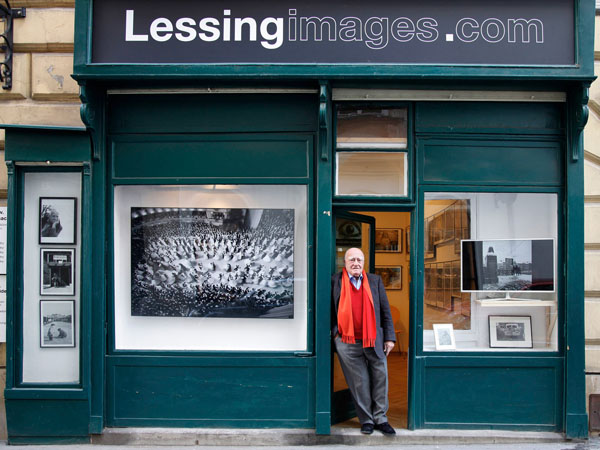
© Philipp Rank / philipprank. com
A VISION FOR EUROPE
Justus Göpel was a true visionary when it came to the establishment of a Europe-wide picture industry. In 1993 he had the idea to found an association for the interests of all European picture agencies. With this, CEPIC (Centre of the Picture Industry) was born and Justus Göpel became the association’s first president. Justus Göpel had made it his goal to target the entire European market and to turn AKG into a picture agency of international stature. To this end, he established “AKG London” in 1994 and “AKG Photothèque” in Paris the following year.

The AKG collection continued to expand, with a strong focus on photography. The mid-nineties saw a veritable explosion of significant image acquisitions. In 1994 Justus Göpel acquired the renowned “Historia-Photo” collection, originally founded by Franz Maria Feldhaus in 1908 and consisting of a remarkable 80,000 images covering the topics of technology & industry.
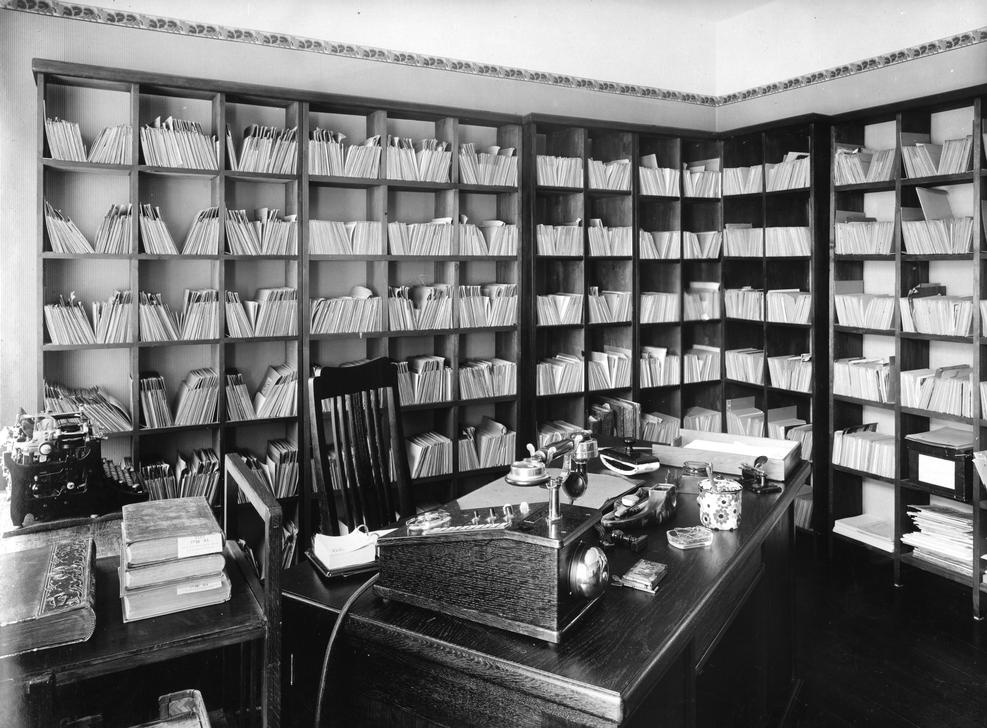
© akg-images
In 1995, AKG then acquired the complete photographic archives of French-Hungarian photojournalist Paul Almasy (1906-2003), comprising 120,000 photographs taken between 1935 and 1985. In the words of Paul Almasy himself, these images captured “the political, economic, social and cultural history of the whole world”.
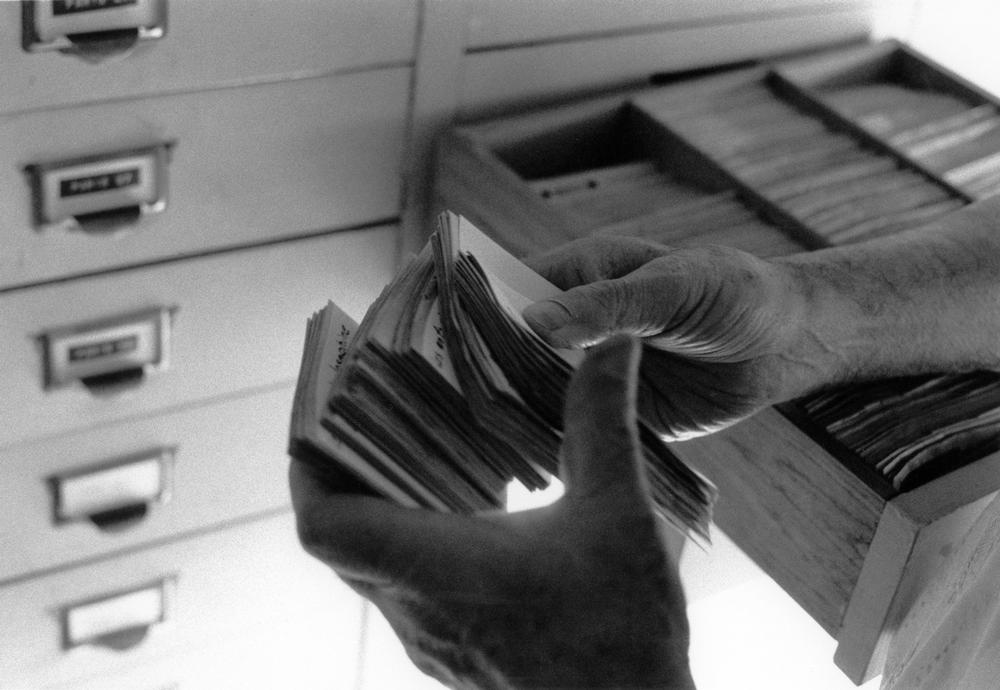
© akg-images / Justus Göpel
Paul Almasy had amassed an impressive collection of negatives during his photographic assignments over the years, which he kept stored in eight 20-drawer filing cabinets, sorted geographically by country and then again sub-categorised by theme. Paul Almasy was extremely grateful that Justus Göpel not only shared an appreciation for his work, but was also able to provide a documentation department, photo lab and scanning department to inventory, print and scan his extensive archive. Paul Almasy was already over 90 years of age when he saw a book of his photographs published for the very first time. In collaboration with photography expert Klaus Kleinschmidt and AKG’s very own Picture Researcher Dr. Axel Schmidt (at the company since 1991), a three further books were published: “Paul Almasy – Zaungast der Zeitgeschichte” (German edition, 1999), “Paul Almasy – Paris” (2001) and “Paul Almasy – Early Work” (2005). These were followed by a series of international photo exhibitions of his work.
THE BIRTH OF AKG-IMAGES
Already very early on, Justus Göpel had recognised the importance of digitalisation within the picture industry and, with the launch of an internal AKG database, had paved the way for a smooth transition into the digital era. His sudden death in 1996 left an immense void in the company, whilst many of his ideas and projects remained uncompleted. The crucial developments in the field of electronic data processing which had been started under his leadership, however, could be further built on by his wife Kathrin Göpel (1952-2014), who became the company’s next CEO. Together with the support of Head of Archive, Jürgen Raible, and the rest of the experienced AKG team, the company launched a new service enabling the digital transmission of images to clients via ISDN. The onset of the digital era marked a decisive shift for the company, and in 1999 the company name ‘AKG’ was turned into the brand we know today: ‘akg-images’.

© akg-images / Schlegelmilch
Under the helm of Kathrin Göpel, akg-images acquired a wealth of new photographic material; the photographic collections of Daniel Frasnay were purchased in 2000, those of André Held in 2006, as well as those of both Erhard Pansegrau and Henning Langenheim in 2007. Additionally akg-images archived, keyworded and digitised over 4000 images by photographer Abraham Pisarek, providing a unique and moving photographic record of Jewish life in 1930s and 1940s Berlin. Another renowned photographer represented by akg-images since 2000 is Tony Vaccaro (born 1922), who was a close friend of Kathrin Göpel’s.
© akg-images / Tony Vaccaro
© akg-images / Tony Vaccaro
© akg-images / Tony Vaccaro
In addition, akg-images began representing numerous other talented photographers, amongst them: Denise Bellon, Hervé Champollion, Peter Cornelius, Justin Creedy Smith, Gérard Degeorge, Francis Dzikowski, Mark de Fraeye, Suzanne Held, John Hios, Ingi, Andrea Jemolo, Marion Kalter, Anthony F. Kersting, Paul Koudounaris, Walter Limot, George Mann, Joseph Martin, Roland & Sabrina Michaud, Giorgio Nimatallah, Vincenzo Pirozzi, Purkiss Archive, Rabatti & Domingie, Jacques Rouchon and Yvan Travert.
One distinctive feature of Kathrin Goepel’s leadership style was that she rejected the traditional hierarchical structure of the company; instead fostering staff responsibility and individual initiative. This turned out to be of great benefit for akg-images.
In 2003, akg-images launched its very first website. The internet provided a host of new opportunities in client communication and image supply, as well as new collaborations with partner agencies around the globe. Today akg-images counts thirty-eight international partner agencies, amongst them Africa Media Online, Album Archivo Fotográfico, Les Arts Décoratifs, Bible Land Pictures, Bildarchiv Monheim, The British Library, ClassicStock, De Agostini PIcture Library, The Francis Frith Collection, Imagno, Interfoto, Mondadori Portfolio, The National Gallery London, North Wind Picture Archives, RIA Novosti, The Royal Geographical Society, Sotheby’s and ullstein-bild. The collection meanwhile holds over 10 million images, 4 million of which are searchable online.
THE THIRD GENERATION
Today, seventy-five years after its creation and three generations later, akg-images is still a family-run business. After the death of Kathrin Göpel in December 2014, her eldest son Friedrich Göpel (born 1984) became the company’s new CEO. Particularly his expertise in the field of information technology is an invaluable asset to the business. His special interest lies in the continual development of the akg-images website www.akg-images.co.uk, enabling clients to search and view tailor-made image selections on popular topics and themes, upcoming events, and important anniversaries. The akg-images archive continues to expand, with new image additions daily. It will be fascinating to see what the next years will hold!
Happy birthday,

